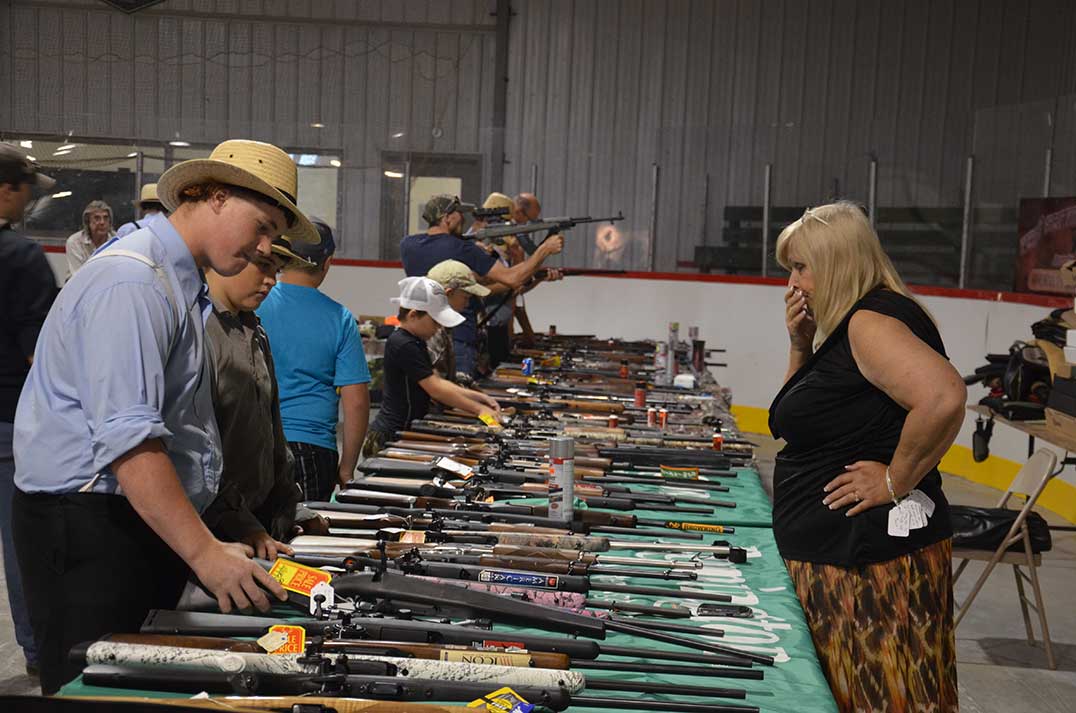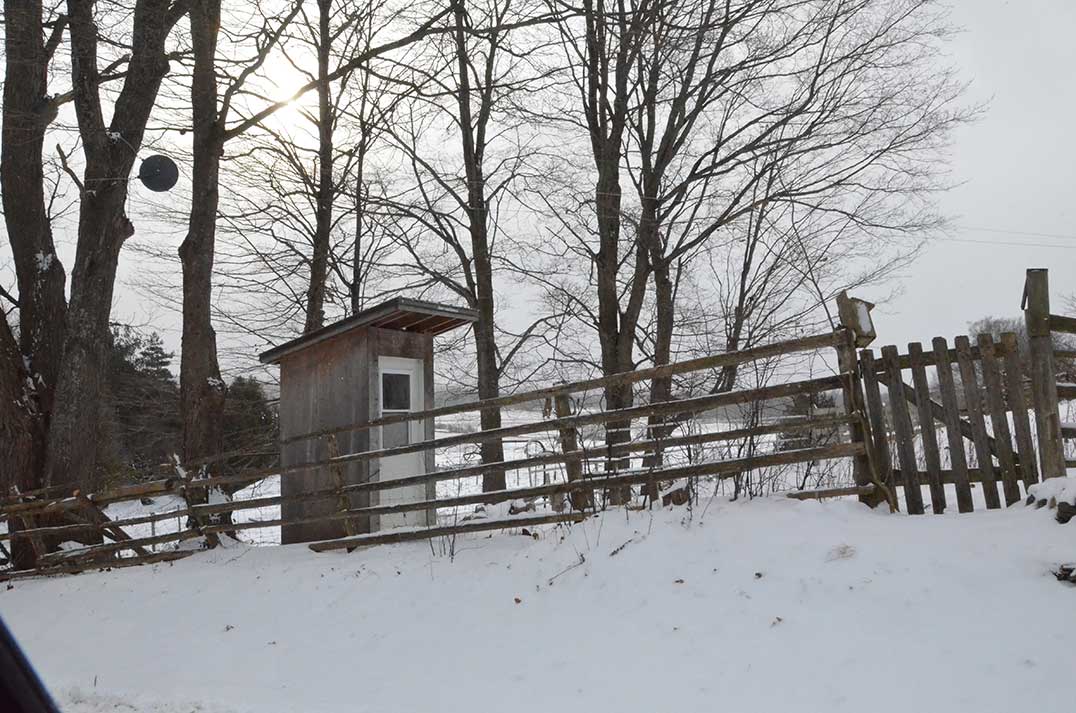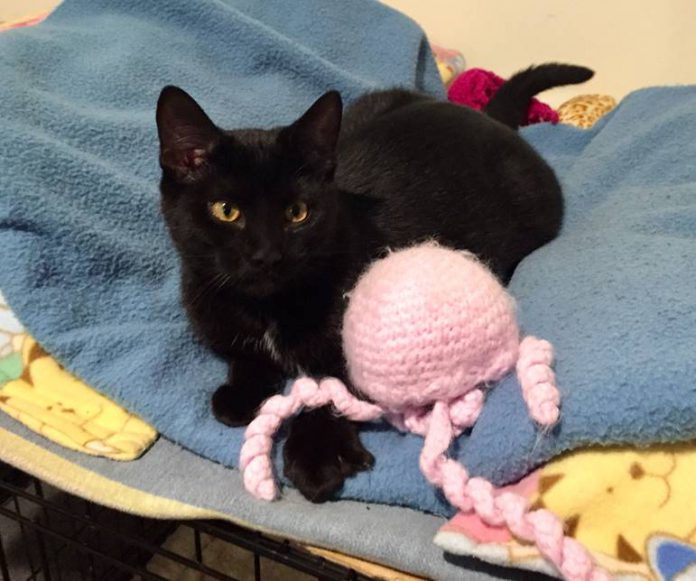MANITOULIN—The weeks leading up to December 25 have evolved into such a hectic bustling commercial frenzy that many a harried Christmas shopper could be forgiven for taking a brief moment to gaze wistfully back to a simpler time. Such yearning has even become a standard Hollywood trope, albeit those movie scripts usually involve a Coca-Cola-inspired Santa Claus, and/or his elves, acting as the catalyst that brings the “true” meaning of Christmas back. But for the Amish community, one of that group of folks known collectively (along with the the Mennonites and the Brethren) as the “plain people,” Christmas is focussed very much on celebrating the birth of Christ.
Manitoulin has become home to a significant Amish community in recent years, particularly in the West End and Tehkummah regions, and the sight of a horse-drawn carriage or wagon trundling down the side of the road is a common sight on Island roads, but there still remains a lot of misconceptions about a community that tends to be somewhat shy and which eschews the limelight.
There are two reoccurring themes that come to mind when seeking to understand the underlying philosophy of the Amish worldview. The first is a rejection of ‘hochmut’, that is roughly translated from the German as being pride or arrogance, and the second would be its flipside, ‘demut’, which roughly translates as humility, calmness, composure and placidity.

German is a fundamental part of the Amish religious practice as the service tends to use the German Martin Luther Bible and the dialect known as Pennsylvania Dutch (sometimes called Low German or Pennsylvania German) is still to be found in many homes. Sermons are delivered in German, as is the service.
An Amish Christmas is not so very different from the practice of many other Christian faiths, except perhaps in its simplicity, but there is always a danger when attempting to paint an accurate picture of any group of people, as there are subtle differences in practices of different groups, particularly those that are geographically dispersed among rural communities. For instance, some Amish communities are much stricter than others and there are variances even within communities.
The “rules” that guide an Amish community follow an oral tradition, the Ordnung. While the Ordnung rules are very strict, they are not codified by being written down in a kind of Amish “manual” or guidebook, but rather are passed down orally within families and communities through the generations. This means that there can be slight variations, particularly amongst geographically separated communities. Added to that variance is that, like most religious groups or communities, there are varying degrees of conformity or adherence to those rules even within groups. But when it comes to core values there does tend to be a universally accepted norm as to the proper way to conduct one’s life—hochmut and demut.

“We celebrate the birth of Christ,” Ruth Streicher of Tehkummah smiled gently when asked about the Amish Christmas traditions. “But there are differences in how families observe Christmas. Some are more conservative than others.”
Although Santa Claus is not part of an Amish Christmas, some families are not so strict, said Ms. Streicher, quickly qualifying that she does not mean that to be critical of anyone in any way. “I think part of it is that people are concerned that if you play make believe with children about Santa Claus, they might start questioning whether Jesus is real or not.”
Ms. Streicher is quite used to questions about her family’s faith and practices coming from community members she meets in the course of a day, and takes most of that curiosity well in stride. But unlike more evangelical faiths, the Amish are not a proselytizing denomination, preferring to lead by the example of how they lead their own lives rather than attempting to impose their beliefs on others.
“People had a lot of questions when we first moved here,” she recalled. “They wondered if we eat pork (we do) and all kinds of other questions. People had no idea about us and they were curious.”
For some members of the Amish community that curiosity of outsiders can engender concern, and they prefer to remain apart and private in the details of their lives and religious practices. Small wonder when you consider that the Amish historically were heavily persecuted for their beliefs, as were many Christian groups that chaffed under those aspects of the Catholic Church that seemed to have no foundation in the Bible or the teachings of Jesus Christ.
The Amish tradition of adopting a plain and somewhat sombre style of dress, along with eschewing much of the technology that abounds in the modern world, does tend to make the Amish stand out in a crowd—and standing out from the crowd (aka being a visible minority) has often made people a target for those who fear anything or anyone different from themselves or what they consider the norms of society.
The uniformity of dress practiced by the Amish (and that of many other Anabaptist-related denominations) is actually quite common and for much the same reason—witness the school uniforms worn by students in many Catholic schools or prep schools. When everyone is dressed the same, worrying about what you look like becomes a lot less important—hochmut and demut. Vanity isn’t an Amish tradition—but cleanliness is close to Godliness, so a clean and neat appearance is the norm.
The beards of the Amish men are quite distinctive, being as they do not also wear mustaches to accompany their chin whiskers. The wearing of beards is, of course, well-founded in passages of the Bible, but mustaches have long held a martial connotation in the European birthplace of the Amish. British soldiers, for instance, were not allowed to shave their upper lips until as late as 1916. The Amish are very much a pacific people, taking quite literally Jesus’ admonition to Peter to turn the other cheek, so anything that associates with a soldier-like appearance is an ill fit.
“That is one of the few ways you can tell the difference between Mennonites and Amish,” explains Mahlor Streicher, Ruth’s husband. “The Amish do not have mustaches.”
Beards also serve another function, in that a man does not grow a beard until he is married—so sporting a beard is a clear indication that a man is “spoken for.”
Like many Christian denominations the Amish avoid graven images, you won’t find crèches, images of the three wise men or the baby Jesus displayed in the home or yard like you might a Catholic home, for instance, but simple decorations such as wreaths and candles are fairly common ways to dress up the home for Christmas celebrations. Christmas cards are also a fondly looked upon Christmas tradition.
Christmas is a wonderful time for catching up with family and friends, and so it is with the Amish, with the Christmas season being a time when people might well drop by at any time of the day to visit.
“It isn’t as common these days as it once was,” noted Ms. Streicher. “These days everyone seems to be working so much.” Still, the Christmas season is a time for visiting and for ensuring that widows, and the sick and infirm, are particularly well looked after. “You really are expected to be prepared for visitors at any time.”
That preparation includes plenty of baking and preparation of holiday foods. Amish pies, breads, puddings and cookies are legendary (although they won’t say so themselves). Along with baking there are fruits and nuts.
Although many Amish families do follow the tradition of placing a candle in the window of their homes at Christmas, welcoming the birth of the Christ child and serving as a beacon to visitors, there are no brightly coloured lights to be found or a shimmering Christmas tree. Small wonder, as most Amish homes do not have electricity wired in. Hydro One eat your heart out—an Amish home tends to be the epitome of “off the grid.”
It isn’t that the Amish are total technophobes—they aren’t. It is just that so much of today’s technology is little more than a distraction and totally unnecessary to living the simple and good life. But the Amish are, at their core, a very practical people and although they don’t own cars or drive trucks, as a rule, hence the horse and buggy image, the Amish do adopt some of the tools and equipment necessary to earn a living.
“My son wants to become a roofer, for example,” said Ms. Streicher. “In order to be able to bid on jobs, he needs to be able to use the tools necessary to compete for work.”
As a necessity of conducting business in this oh so connected of worlds, some Amish can even be found in possession of cell phones these days, whether it be for business or for reasons of safety on the job site. Most families do not have a phone in the home, however. A small phone booth located near the edge of the property is far more likely. In really strict Amish families, there may not even be a phone located anywhere on the property.
If you are an Amish teenager, don’t have your heart set on the latest in PS4 or Xbox tech in that gift wrapped box on Christmas Day, in some families a battery-operated game might make an appearance, but that would be more the exception than the rule. Such things tend to encourage solitude and separation from the family unit.
Stories are enjoyed and shared and in the Christmas season, schoolchildren will put up decorations, sing songs, tell stories, read poems and put on plays in order to celebrate the meaning of Christmas.
Gifts tend to the practical for adults, something useful or practical like a quilt or dishes for a woman, tools or farm equipment for a man, and for children, gifts are most likely to be a wooden toy, model toy tractor or a book, perhaps a handmade doll. Sports equipment like hockey sticks or ball gloves are also a likely gift. Games that are family-oriented and would tend to bring family members closer together are also likely to find favour.
But these tendencies are not generally written in stone and can vary greatly from community to community and even from family to family.
Many Amish still observe the old Christmas, 12 days after December 25, now more usually known as the Epiphany or King’s Day, on January 6, when tradition has it that the wise men arrived to honour the newborn king.
The Amish may have a dour aura, due in large part to their somber dress and reluctance to show ostentation or enjoy being at the centre of attention, but those members of that community interviewed for this article have proved to be anything but “dour.” They are a practical and simple living folk, to be sure, but also firm adherents of the teachings of Jesus Christ and the admonition to practice a simple, caring, loving life. Spending time with family and friends, enjoying each other and plenty of laughter fit into those parameters quite well.
But when all is said and done, the epicentre of an Amish Christmas isn’t gifts, or food, or even the gatherings of friends and family—it is the birth of Christ.




